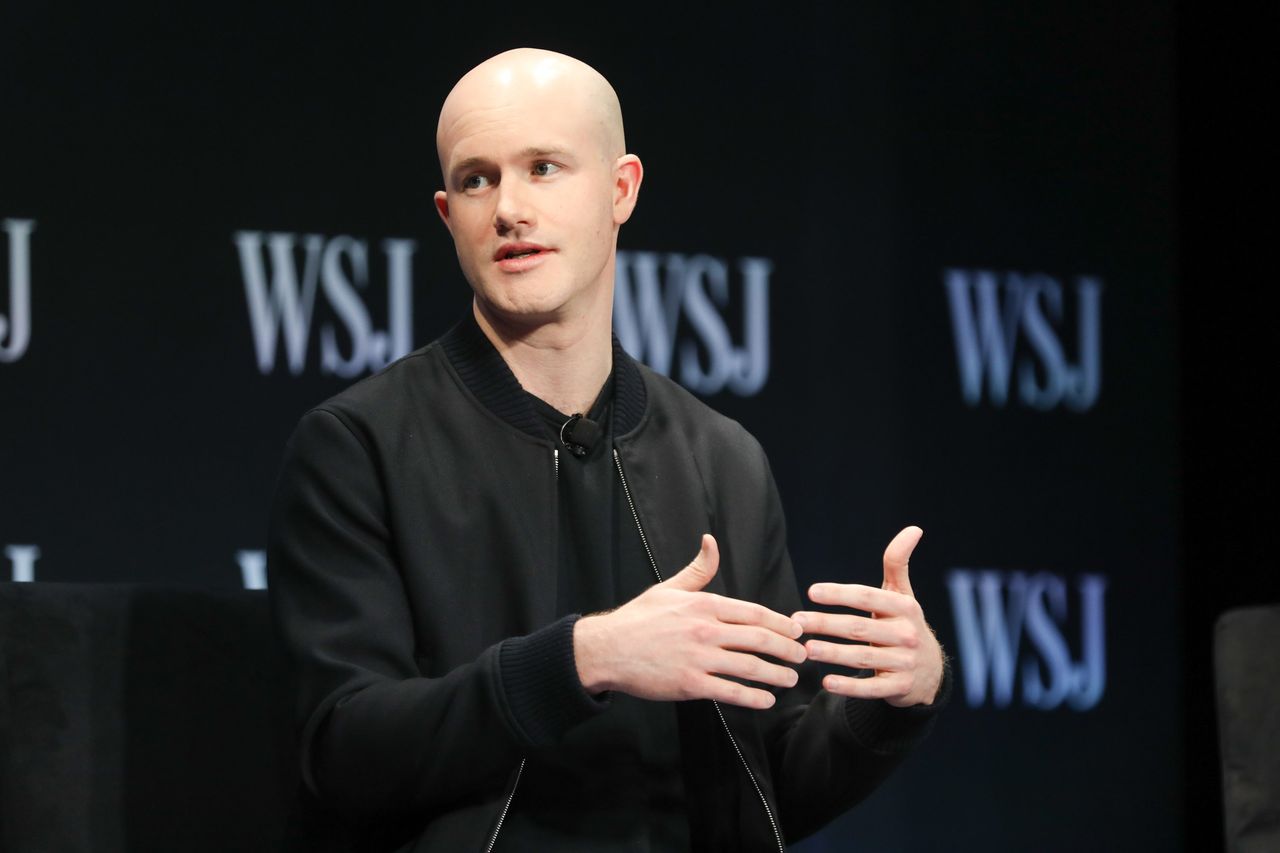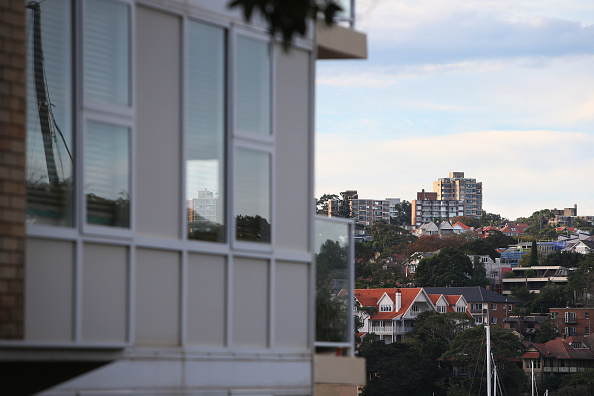Coinbase’s Rapid Rise Left It Exposed In Crypto’s Collapse
Fast expansion made Coinbase the biggest U.S. crypto exchange. Now it faces high expenses, dwindling cash and a challenge from regulators.
Brian Armstrong, an early devotee of blockchain technology, built the cryptocurrency exchange Coinbase Global Inc. to be big.
He hired employees by the hundreds, pushed into new markets and scaled up the number of digital tokens available on the platform. Coinbase became the largest crypto exchange in America and went public in spring 2021 with a market value of nearly US$86 billion.
This year’s crypto collapse has dropped that value to roughly US$21 billion. And it has left Mr. Armstrong to wrestle with a sprawling business now faced with high expenses, dwindling cash and, more recently, a challenge from federal regulators.
“Coinbase expanded wildly before it got its sea legs,” said Adam Dell, chief executive of Domain Money, an app that enables investors to buy investments including crypto and is a Coinbase competitor. “They grew so fast that it got away from them.”
Almost every crypto company is struggling, with bitcoin prices off more than 50% this year, and Coinbase’s struggles reflect those of many others in the industry. If crypto prices rise, Coinbase is likely to emerge a winner. The firm’s stock rose sharply this week, a potential sign of investor faith in its future. But after its rapid growth, Coinbase, one of crypto’s most important players, faces unique challenges in the downturn.
Coinbase raced to add employees even after the crypto market weakened this year, and sometimes before even deciding on the new hires’ responsibilities, according to former employees. It pushed into some businesses that have floundered and adopted unorthodox management practices that led to pushback among some on the staff.
Coinbase now finds itself at odds with the Securities and Exchange Commission, which has taken the position that several crypto coins traded on Coinbase’s platform are securities. Coinbase, which isn’t licensed to operate as a securities exchange, denies they are. But a potential lawsuit from the securities regulator could lead to a delisting of some coins and greater hesitation about adding new ones in the future.
Coinbase is cutting back, including a deep staff reduction in June and cost cuts that include eliminating free employee lunches.
A Coinbase spokesman said, “Building a company that will disrupt as many industries as Coinbase was always going to be ambitious. We’ll define our success over decades.” Mr. Armstrong, the chief executive and co-founder, declined to be interviewed.
Mr. Armstrong, who studied economics and computer science at Houston’s Rice University, was running an e-learning startup in 2010 when he read the original bitcoin white paper by the pseudonymous Satoshi Nakamoto. He soon became enamoured of the new ideas of blockchain technology and a digital version of cash.
He started Coinbase in 2012, seizing on an early problem: There was no secure and accessible way for people to store their digital currency.
When customers asked to trade bitcoin, not just store it, Coinbase became an exchange.
In late 2013, Coinbase’s handful of employees worked in a cramped apartment on Bluxome Street in San Francisco, where staffers took calls in the bathroom or in closets. Adam Draper, an early investor, said the company’s first hire was a customer-support specialist, a sign of Mr. Armstrong’s focus on making it easy for investors to bet on crypto.
“He wanted Coinbase to be the trusted brand for regulators, consumers and investors,” Mr. Draper said.
By 2017, Coinbase was in a proper office with more than 150 staffers. Co-founder Fred Ehrsam departed that year, leaving Mr. Armstrong at the helm.
Mr. Armstrong would work late into the night, then come to the office at 10 a.m. or later. Much of his focus was on improving Coinbase’s technology, as he attended product meetings and weighed in on new offerings, former executives recall.
Shy by nature, Mr. Armstrong sometimes struggled to communicate with some staffers, including those outside of the technology field, former executives said. After Brian Brooks was hired as chief legal officer in 2018, he had weekly check-in meetings with Mr. Armstrong in a conference room. They sat across from each other and typed comments back-and-forth on Google docs, spending nearly 30 minutes without uttering a word, a person familiar with the meetings said. Later, as Mr. Armstrong became more comfortable with Mr. Brooks, he began speaking with him in their meetings, the person said.
Asked about that, a Coinbase spokesman declined to comment.
Mr. Armstrong told colleagues he was reluctant to speak at industry events, some say. Two former staffers described him as “Vulcan”-like, referring to the “Star Trek” humanoids that show little emotion, and said he appeared to be uncomfortable reprimanding underlings. A former executive recounted how a senior executive fell asleep during a company retreat, after a series of late-night work sessions, but Mr. Armstrong wouldn’t wake the executive, surprising at least one member of the team. The Coinbase spokesman declined to comment.
After hiring more executives, Mr. Armstrong delegated some responsibilities and preferred to spend time with his headphones on, coding and working to solve technical problems, one former executive said.
He could be a supportive boss. In 2017, when Coinbase listed bitcoin cash, a spinoff from the bitcoin code, user demand was so high Coinbase had to freeze trading. As tech staffers raced to fix the problem and mollify unhappy customers, Mr. Armstrong offered encouragement, assuring a tech employee the CEO stood behind him.
Mr. Armstrong and other executives hurried to expand their team to keep up with growing interest in cryptocurrencies, hiring people from leading tech and financial firms.
Within the company, according to some who worked there, employees who gained power often were those focused on recruiting. Coinbase sometimes set aggressive hiring goals without a clear understanding of what new employees would be doing, according to these people, who said that at times, various sets of employees tackled similar projects.
Staffers often spent much of the day in meetings, sometimes as many as 15 in a day, according to former employees. One said that productivity was hindered by internal debates, competition and criticism.
Employees launching new products sometimes worried about “blockers”—a term for others on the staff who tried to hinder new ideas.
Coinbase executives say they realize they conduct too many meetings and have begun taking steps to reduce them. One executive said the company may take longer than others to make decisions because it is thoughtful about new products and is more focused on security and compliance than others in the crypto world.
In another quirk of the Coinbase culture, senior executives, including Emilie Choi, president and chief operating officer, regularly scrutinized employees’ LinkedIn pages, sometimes ordering staffers to adjust language on them, according to former employees. Ms. Choi said she reads the LinkedIn listings to see if employees exaggerate their responsibilities, part of an effort to build a culture of accountability.
While Coinbase raced to add employees and draw up expansion plans, it sometimes was slow executing them. Coinbase said last October it would launch a marketplace for nonfungible tokens, or NFTs, and shifted some top engineers to the project. It didn’t introduce a beta version until April, and the NFT marketplace has done just $4.2 million in transactions, according to Dune Analytics.
Coinbase executives disputed the figures but didn’t provide other data on the NFT platform. They said it’s too early to count out new initiatives, including the NFT marketplace.
Staffers have in the past debated creating a Singapore-based crypto exchange to offer leverage and other trading capabilities to non-U.S. traders, but never implemented the strategy, a former executive said. The Coinbase spokesman wouldn’t comment.
This April, Coinbase executives traveled to India to announce the launch of operations there. Within days, Coinbase restricted local-currency transfers after criticism from an Indian regulator. It hopes to resume the transfers soon.
Sixteen months ago, when Coinbase was going public, eager investors embraced Mr. Armstrong’s vision of bringing bitcoin to the masses. At Coinbase’s value after the IPO, Mr. Armstrong’s 20% stake was worth about $17 billion. Nine months later, he bought a US$133 million Los Angeles estate, one of the priciest home sales ever in the L.A. area, according to people familiar with the deal.
Coinbase more than doubled its staff last year. Though it had a history of adding new tokens to its platform at a slower pace than competitors such as Binance Holdings Ltd. and FTX, Coinbase sped up the listing pace in the first half of last year.
Mr. Armstrong said a year ago that Coinbase would ultimately offer “every reputable cryptocurrency to our users (read: not a scam, or illegal).” By the end of 2021, Coinbase supported 172 coins for custody and 139 for trading.
The company continued adding staff this year despite the weakness in crypto values. It reached a headcount of 6,000 this summer, compared with about 300 employees at rival FTX.
As digital coins’ values slid this year, trading volumes shrank and Coinbase shares fell. An employee at one point circulated a petition calling for the ouster of three top executives, not including Mr. Armstrong.
The CEO responded on Twitter, calling the petition “really dumb on multiple levels” and writing: “If you have no confidence in the execs or CEO of a company then why are you working at that company? Quit and find a company to work at that you believe in!”
In June, Coinbase laid off 1,100 employees, 18% of its workforce. The move caught many by surprise. Some members of what employees have dubbed “the Coinbase 18” tried logging into their work computers but couldn’t, and learned they’d lost their jobs only after discovering an email on a personal device. Some told friends they were distraught at how the news was delivered.
A Coinbase spokesman said deciding to reduce the workforce was difficult but the company took pains to see that the transition was as smooth as possible, giving severance pay and helping people find new jobs.
Late last month, federal prosecutors filed an insider-trading case against a former Coinbase manager, who denied the charges, and at the same time, the Securities and Exchange Commission asserted that seven crypto assets traded on the Coinbase platform qualify as securities. While known as an exchange, Coinbase isn’t regulated as one, the way New York Stock Exchange and Nasdaq are.
Coinbase said it doesn’t trade securities, and criticized the SEC for failing to engage with digital-asset companies or adapt the agency’s regulations to cryptocurrency markets. Coinbase’s business model is largely dependent on revenue from retail trading, so a determination that the seven crypto assets are securities could upend part of that model.
If a court agrees with the SEC that some of the digital tokens are securities, Coinbase would likely have to stop trading them on its exchange. Coinbase itself could potentially face liability, such as fines, if the SEC eventually sues Coinbase over its decision to list the assets.
Either step could have a chilling effect on Coinbase’s future listing decisions, while its overseas competitors would have fewer constraints on their growth. Binance.US, the U.S. arm of Binance Holdings, earlier this week delisted one of the alleged securities.
A Coinbase spokesman said that in 2018 the company acquired the licenses necessary to operate a securities trading platform, though it didn’t do the work necessary to employ them. Coinbase could take the steps to become a licensed securities exchange if this is deemed required, the spokesman said.
More than 90% of Coinbase’s revenue comes from individual investors. In a potential competitive threat, Fidelity Investments moved in April to let people hold cryptocurrencies in 401(k) accounts, which Fidelity administers for thousands of employers. Coinbase executives said the retail crypto market is large enough that the company won’t be threatened by new entrants.
They added that Coinbase is rolling out digital wallets and other products to help investors access so-called Web 3.0, referring to a new, decentralized iteration of the internet reliant on blockchains.
Ms. Choi, Coinbase’s president and COO, said the company has been through several up-and-down cycles. “We’re investing in the core business and in the future,” she said. “We welcome competition.”
Reprinted by permission of The Wall Street Journal, Copyright 2021 Dow Jones & Company. Inc. All Rights Reserved Worldwide. Original date of publication: August 5, 2022.
 Copyright 2020, Dow Jones & Company, Inc. All Rights Reserved Worldwide. LEARN MORE
Copyright 2020, Dow Jones & Company, Inc. All Rights Reserved Worldwide. LEARN MORE
This stylish family home combines a classic palette and finishes with a flexible floorplan
Just 55 minutes from Sydney, make this your creative getaway located in the majestic Hawkesbury region.
Continued stagflation and cost of living pressures are causing couples to think twice about starting a family, new data has revealed, with long term impacts expected
Australia is in the midst of a ‘baby recession’ with preliminary estimates showing the number of births in 2023 fell by more than four percent to the lowest level since 2006, according to KPMG. The consultancy firm says this reflects the impact of cost-of-living pressures on the feasibility of younger Australians starting a family.
KPMG estimates that 289,100 babies were born in 2023. This compares to 300,684 babies in 2022 and 309,996 in 2021, according to the Australian Bureau of Statistics (ABS). KPMG urban economist Terry Rawnsley said weak economic growth often leads to a reduced number of births. In 2023, ABS data shows gross domestic product (GDP) fell to 1.5 percent. Despite the population growing by 2.5 percent in 2023, GDP on a per capita basis went into negative territory, down one percent over the 12 months.
“Birth rates provide insight into long-term population growth as well as the current confidence of Australian families,” said Mr Rawnsley. “We haven’t seen such a sharp drop in births in Australia since the period of economic stagflation in the 1970s, which coincided with the initial widespread adoption of the contraceptive pill.”
Mr Rawnsley said many Australian couples delayed starting a family while the pandemic played out in 2020. The number of births fell from 305,832 in 2019 to 294,369 in 2020. Then in 2021, strong employment and vast amounts of stimulus money, along with high household savings due to lockdowns, gave couples better financial means to have a baby. This led to a rebound in births.
However, the re-opening of the global economy in 2022 led to soaring inflation. By the start of 2023, the Australian consumer price index (CPI) had risen to its highest level since 1990 at 7.8 percent per annum. By that stage, the Reserve Bank had already commenced an aggressive rate-hiking strategy to fight inflation and had raised the cash rate every month between May and December 2022.
Five more rate hikes during 2023 put further pressure on couples with mortgages and put the brakes on family formation. “This combination of the pandemic and rapid economic changes explains the spike and subsequent sharp decline in birth rates we have observed over the past four years,” Mr Rawnsley said.
The impact of high costs of living on couples’ decision to have a baby is highlighted in births data for the capital cities. KPMG estimates there were 60,860 births in Sydney in 2023, down 8.6 percent from 2019. There were 56,270 births in Melbourne, down 7.3 percent. In Perth, there were 25,020 births, down 6 percent, while in Brisbane there were 30,250 births, down 4.3 percent. Canberra was the only capital city where there was no fall in the number of births in 2023 compared to 2019.
“CPI growth in Canberra has been slightly subdued compared to that in other major cities, and the economic outlook has remained strong,” Mr Rawnsley said. “This means families have not been hurting as much as those in other capital cities, and in turn, we’ve seen a stabilisation of births in the ACT.”
This stylish family home combines a classic palette and finishes with a flexible floorplan
Just 55 minutes from Sydney, make this your creative getaway located in the majestic Hawkesbury region.






















